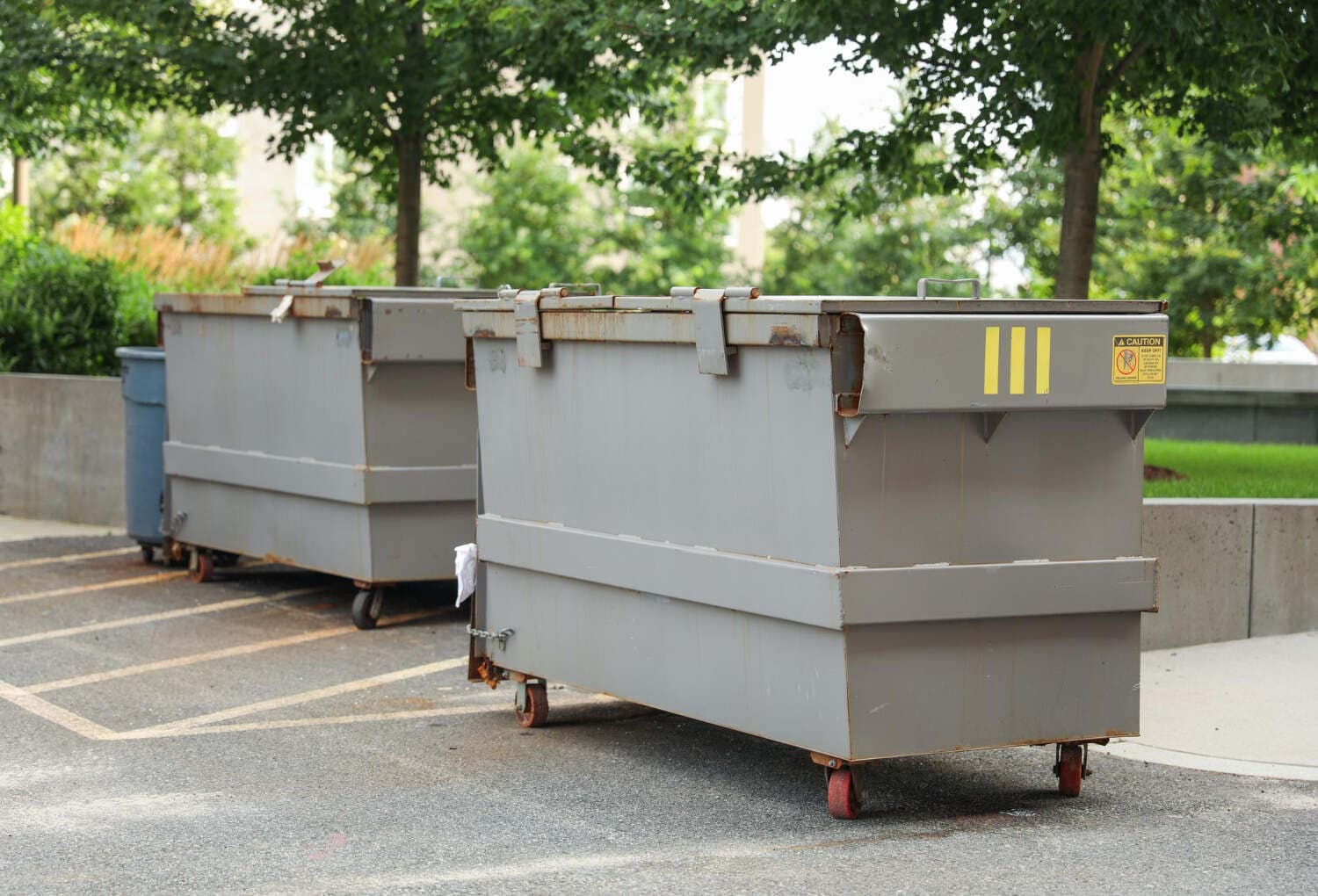BLOG / HOW TO
How to Clean Your Attic - 8 Easy Steps


A cluttered and messy attic cleanout seems like a difficult task at first. But with the right approach and a clear plan, the job becomes much more manageable. A proper attic clean-out helps you spot potential issues like mold, structural damage, or pest activity while also reclaiming valuable storage space. As you sort through everything, you’ll create a more organized, functional area and you might even stumble upon something meaningful you forgot you had.
What Is An Attic Cleanout? 🔗
An attic cleanout means clearing out unwanted junk and giving the space a fresh start.
Most homeowners use their attic to stash old furniture, holiday décor, and all kinds of forgotten items. Cleaning it out starts with sorting everything you find, deciding what to keep, donate, or sell. Once that’s done, give the space a deep clean by sweeping, vacuuming, and scrubbing the floors and surfaces.
It’s also smart to check for rodent droppings, water damage, or mold growth, since these issues can lead to serious health problems and costly repairs if ignored.
Even though the job can be tiring, having the right tools and a step-by-step plan makes it manageable and worth it. A clean attic means better air quality, safer storage, and a home that feels lighter and more organized.
Does An Attic Need To Be Cleaned? 🔗
Your attic is screaming for cleaning, and it’s not just about cleanliness. The accumulating dust, debris, and sometimes pests can make it almost inhabitable.
A well-cleaned attic helps improve the quality of your home. The fresh air protects attic insulation and prevents bugs from spreading potential problems.
Besides, it is a well-organized and precious space. The attic is part of your home, and cleaning it may save you an even bigger headache. Therefore, a clean attic is very worth it.
8 Easy Steps For Your Attic Cleanout 🔗
Cleaning your attics is crucial. It provides additional storage space to keep whatever you have after cleaning. Here are some steps to clean your attic:
1. Clear Everything Out and Sort Smartly 🔗
Start by removing every item from your attic so you can work with a completely open space. As you take things out, sort them into piles: keep, donate, sell, or throw away. This makes it easier to see what you actually need and get rid of what’s been collecting dust.
While sorting, check for damage like rust, mold, or stains especially on items stored for years. If the amount of clutter feels overwhelming, hiring a professional junk removal service can make the process faster and safer. For the items you keep, label each box clearly to stay organized from the start.
2. Deep Clean Every Surface and Corner 🔗
Once the attic is empty, give it a deep clean. Use a microfiber cloth or duster to wipe down beams, rafters, shelves, and hard-to-reach corners where dust usually hides. Don’t forget air vents or duct areas, they often collect piles of dust and debris.
Use a vacuum with a HEPA filter, which captures tiny particles like allergens, mold spores, and dust mites. This not only improves air quality but also helps protect your insulation from long-term damage. A well-cleaned attic stays healthier and easier to maintain.
3. Look for Damage, Pests, and Hidden Issues 🔗
Cleaning gives you the perfect chance to inspect the attic for issues you might have missed. Look for signs of:
-
Pest infestations (droppings, chewed wires, nests)
-
Water damage (stains, warped wood, musty smells)
-
Mold growth
Pay close attention to insulation, corners, and access points where pests may enter. If you find active infestations or unsafe damage, call a licensed pest control or home repair service to address it before it gets worse. Early detection saves you money in the long run.
4. Disinfect the Space and Refresh the Air 🔗
After the attic is dust-free, sanitize the surfaces using a cleaner designed for attics or general household disinfectant spray. This step reduces bacteria, lingering odors, and pest-attracting residue.
If you prefer natural fresheners, place baking soda, activated charcoal bags, or odor-absorbing gels around the attic. These help maintain a clean, fresh-smelling environment without chemicals.
5. Check and Upgrade Insulation 🔗
Your attic cleanout is the ideal time to assess your insulation. Look for areas that are wet, compressed, or deteriorated, since damaged insulation can raise energy bills and create moisture issues.
If repairs are needed, contact an attic insulation specialist or removal company for professional guidance. Upgraded insulation keeps your home more energy-efficient, lowers heating and cooling costs, and improves overall comfort.
6. Organize and Maximize Storage 🔗
Before moving items back in, plan your storage layout. Use sturdy, labeled plastic bins instead of old cardboard boxes, they protect your belongings from moisture and pests.
Place items you rarely use (holiday décor, keepsakes) in the back and lighter or frequently used items toward the front. Consider using wall shelves or stackable bins to make the most of your vertical space. A well-organized attic saves time and prevents future clutter.
7. Improve Lighting and Ventilation 🔗
Most attics have poor lighting and limited airflow, which makes cleaning and long-term maintenance harder. Consider upgrading old bulbs to brighter LED lights or installing battery-powered lights in darker corners.
Also check ventilation, blocked vents can trap heat and moisture, leading to mold and damaged insulation. If airflow feels restricted, clear any obstructions or consult a professional to improve attic ventilation. Better lighting and airflow make the attic safer, cleaner, and easier to use.
8. Create a Simple Maintenance Routine 🔗
To keep your attic in good shape, set a routine maintenance schedule. A quick check every six months is usually enough. Look for new signs of pests, moisture, dust buildup, or insulation changes.
Regular upkeep avoids major repairs, keeps your storage organized, and ensures the attic stays safe, clean, and functional year-round.
How Much Does An Attic Cleanout Cost? 🔗
The cost of an attic cleanout can vary widely depending on a few key factors, mainly the size of your attic, how much clutter has built up, and whether you plan to handle the job yourself or bring in a professional service.
In most cases, homeowners spend anywhere from $150 to $1,000 or more. Larger attics or heavy clutter naturally push the price higher. If you hire a professional attic cleaning service, the cost structure may look different. Many companies charge based on the amount of debris, crawl-space accessibility, pest prevention treatments, sanitation, and insulation protection.
The good news? Many reputable companies offer free on-site estimates, which makes it easier to understand your actual cost before committing.
If you choose the DIY route, you can definitely save money upfront. However, it often requires more time, physical effort, and the right safety gear. And while it’s budget-friendly, it may not give you the same peace of mind. Professionals bring experience, proper equipment, and thorough cleanup methods that help protect your insulation, prevent pest issues, and ultimately improve your home’s comfort and value.
In short, whether you go DIY or hire a pro depends on your budget, time, and how deep your attic cleanout needs to be.
Read More: How Much Does Junk Removal Cost
How Often Should You Clean Your Attic? 🔗
It’s a good idea to give your attic a thorough cleaning at least once or twice a year. Most homeowners prefer doing it in the spring and fall, two seasons that make it easier to spot problems like moisture, pests, mold, or heavy dust buildup before they turn into bigger (and more expensive) issues. Regular cleanings also help keep the space organized and protect anything you’re storing up there.
If you ever notice signs of pests such as droppings, nests, strange noises, or chewed insulation, it’s smart to call a pest control professional right away. Addressing these issues early prevents damage and keeps your home safer and more comfortable. Staying consistent with attic maintenance makes each cleanup easier and keeps your entire home in better shape year-round.
How Long Does It Take to Clean Out an Attic? 🔗
Cleaning out an attic can take a full day or more, depending on its size and clutter. Sorting through old boxes, dust, and debris can quickly become overwhelming for DIY efforts.
Hiring professional attic cleaning services can make the process much faster. Skilled teams can complete an attic cleanup in just a few hours or half a day, using proper tools and safety equipment. They can also handle pest issues and help with attic organization, turning a messy space into a functional, healthy part of your home.
A professional attic cleanout not only saves time but also protects your home and prevents potential injuries. Investing in attic cleaning ensures better insulation, improved air quality, and a clutter-free, usable space, making it a smart choice for any homeowner.
Conclusion 🔗
Keeping your attic clean is more than just a chore, it’s key to maintaining a healthy, comfortable home. Regular cleaning helps prevent dust buildup, pest infestations, and moisture problems, protecting both your insulation and your stored belongings.
For the best results, consider scheduling a professional deep clean at least once a year. Between those visits, a little monthly DIY upkeep like removing dust, checking for leaks, and organizing storage can go a long way. With consistent care, your attic can become a safe, functional space for storage, seasonal items, or even a small workspace, adding both value and peace of mind to your home.
FAQs: How To Do An Attic Cleanout 🔗
How often should I clean my attic? 🔗
It’s best to schedule a professional deep clean at least once a year. Between that, doing small monthly checkups, dusting, organizing, and inspecting for leaks or pests keeps your attic in good shape.
Can I clean my attic myself? 🔗
Yes, light cleaning and organizing can be done safely with proper protective gear, like gloves and a dust mask. For major tasks, like insulation care or pest removal, hiring a professional is recommended.
How do I prevent pests in my attic? 🔗
Regular cleaning, sealing cracks or gaps, and keeping food or organic materials out of the attic can prevent infestations. If pests appear, a professional exterminator may be necessary.
Is attic cleaning necessary for energy efficiency? 🔗
Absolutely. Dust, debris, and moisture can reduce the effectiveness of your insulation. A clean attic ensures proper airflow, helping your HVAC system work efficiently and lowering energy bills.
Can I turn my attic into usable space after cleaning? 🔗
Yes! Once it’s cleaned and organized, your attic can be used for storage or even converted into a small office, hobby area, or extra living space, adding value to your home.
KB Choudhury is the Chief Executive Officer of WeCycle, a technology-driven platform dedicated to transforming the recycling and waste management industry. Under his leadership, WeCycle focuses on creating efficient, data-powered solutions that simplify waste collection, promote eco-friendly practices, and support a sustainable circular economy. Choudhury’s vision for WeCycle centers on leveraging innovation and digital tools to make recycling smarter, more accessible, and impactful for both businesses and communities.
Related blogs
Quick junk removal services — find your price
Enter your zip code to see if Wecycle operates in your location.



